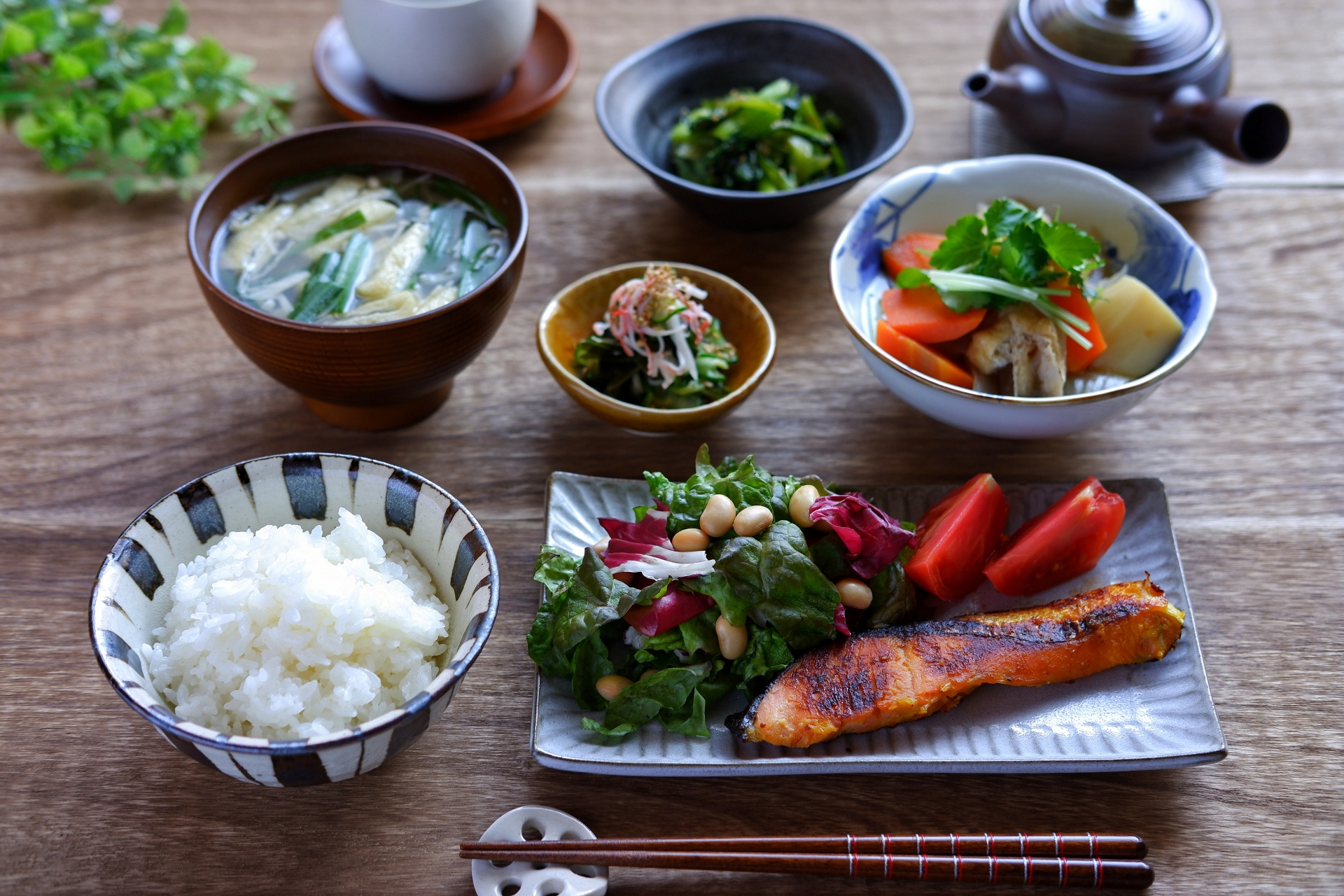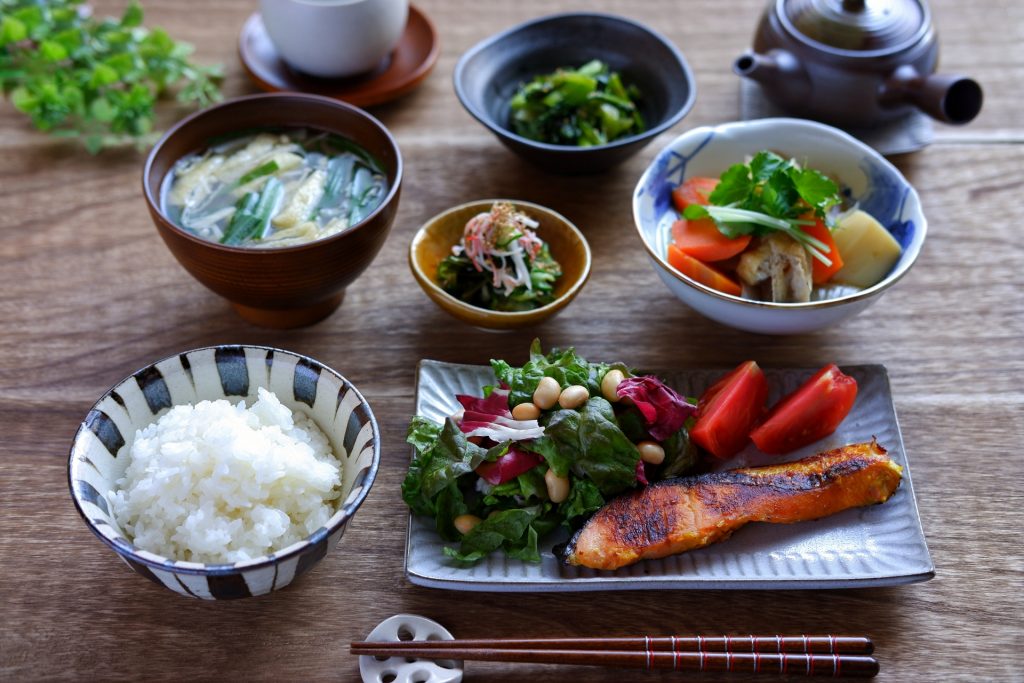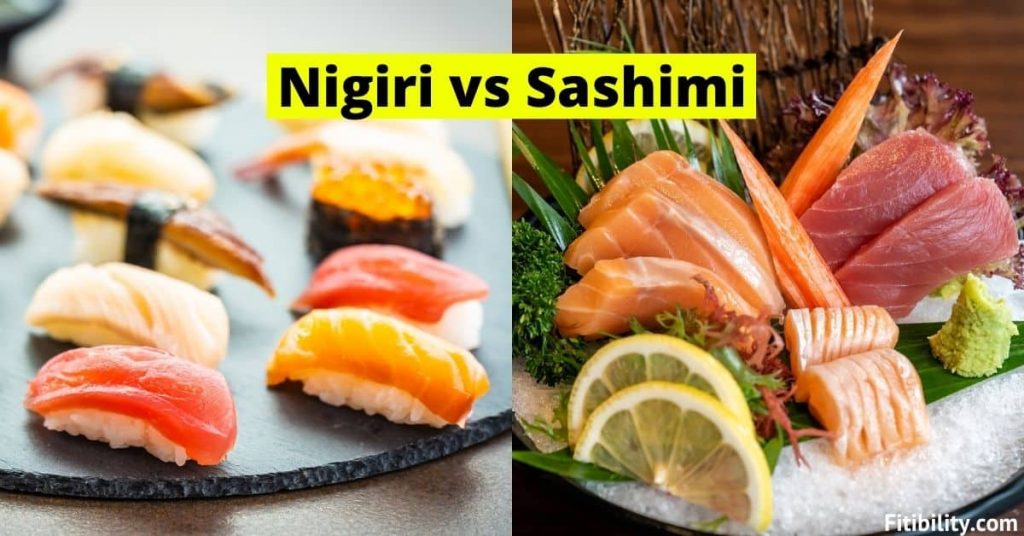Typical Japanese Dinner Ingredients
Rice, soup, pickles, salad, and other protein and vegetable dishes make up a typical Japanese supper. Dessert may be offered after the meal, along with beverages including tea, beer, and sake. The dishes include traditional Japanese fare, and many contemporary recipes draw inspiration from other Asian and Western cuisines. The various courses often found in Western and European cuisine, where each course is presented separately, are slightly different from the meal format in Japan. The typical home-cooked Japanese meal, or gohan, consists of one course with a number of items served simultaneously, with dessert serving as the second course.
The Instant Need for Homemade Curry Powder
Rice
In almost all Japanese meals, rice is present. This could be any number of rice meals, such as brown rice, steaming white rice, or white rice that has been blended with barley (hakumai) (genmai). Takikomi gohan are seasoned rice dishes that steam rice with vegetables, seafood, or other proteins. An example of one of these dishes is the katsudon pork cutlet rice bowl.
Furikake, Nori, or Tsukudani
At home, plain rice is frequently served with seasoned seaweed (nori), rice seasoning (furikake), which is a concoction of dried vegetables, an egg, seaweed, bonito flakes, and/or sesame seeds. Another well-liked topping for rice is tsukudani. This wet seasoning is frequently made of kelp or seaweed and may be combined with other seafood or dried fish.
Soup
Every Japanese dinner includes soup in addition to rice. Almost generally, it is served hot. The most popular type of soup is miso shiru, and the only restriction on the ingredients is the chef’s imagination. Sumashi jiru, a dashi-based soup that is also well-liked, can contain a variety of vegetable, protein, and seafood combinations. The third and least popular soup is consommé, which is based on a protein and mirepoix broth and is more Westernized.
Pickles
Pickles are known as tsukemono on the Japanese dinner table and are frequently eaten with rice. There are innumerable types, including pickled cucumbers, ginger, plums, and the fruit and vegetable combination known as sanbaizu tsukemono.
Salad
A salad in Japanese cuisine might be a fresh lettuce salad prepared in the Western style. However, it will also feature veggies that have been marinated in vinegar, such sunomono (seaweed, cucumber, and ginger). There are salads of cooked vegetables, such as ohitashi, which frequently include spinach. Additionally, you can come across hijiki (seaweed salad), kinpira gobo (braised burdock root), and a straightforward Japanese okra salad.
Protein
In a typical Japanese supper, the main protein dish is family-style served with veggies. Given the nation’s proximity to the ocean, seafood is frequently used in recipes. While the main course of a Western meal can be a piece of grilled or fried fish, sashimi (raw fish), or other seafood, a Japanese meal might also include fish dishes like kamaboko (fish cakes) and sakana no nitsuke (fish cooked in a sake-based sauce). Other proteins including chicken, beef, and pork are also widely used nowadays.
Vegetable and Protein-Rich Dish
In addition to the primary protein, there could be a side dish like nikujaga (a stew of beef and potatoes) or yakiniku donburi that combines a protein with vegetables (beef with vegetables). These may be baked, fried, sautéed, simmered, or served family-style.
Vegetables
Vegetables have a major role in Japanese cuisine. With soy sauce and mayonnaise, the veggies are cooked in a dashi broth, sautéed, boiled, or steam-poached. Yaki Nasu, for instance, is a well-liked meal made of grilled Japanese eggplant and garnished with ginger, bonito flakes, green onions, and soy sauce.
Beverages
Diners are provided hot green tea or another Japanese tea with their meals, and during the warmer months, cold barley tea (mugicha) is preferred. Beer and sake are common dinnertime alcoholic beverages.
Desserts
There is a delightful variety in Japanese desserts. They include sweet rice cakes, biscuits, and cakes, as well as sweet beans and gelatin (such as mizu yokan). Cream puffs, frozen sweets, and other fruit desserts are also popular.
Dashi
Recipes, Shopping, and Cooking
Every cuisine has a preferred stock type. For instance, ingredient lists for American recipes frequently include chicken stock. The base of many dishes in Japanese cuisine, including nimono, dipping sauce, and miso soup, is dashi, a special stock (simmered dishes). There are various varieties of dashi stock, each with a unique culinary use, but they are all unified by their capacity to provide umami (the fifth taste) to a meal.
Describe Dashi.
Dashi broth, in its simplest form, is a group of stocks made from a combination of umami-rich ingredients such dried kombu (sea kelp), dried shiitake mushrooms, and dried whole sardines. It serves as the foundation of Japanese cuisine and serves as the liquid base for meals like miso soup, nabe (hot pot foods), and udon and ramen noodles.
How to Quickly Use Cornstarch to Thicken Sauces
Since it takes some time, making dashi is often a labour of love. To obtain the greatest advantages, the substances are frequently required to be soaked or otherwise reconstituted from a dried form. However, the procedure is simple and takes little longer than producing your own chicken stock. Most importantly, it develops a flavour foundation from which the meals’ final products will profit.
Varieties
Dashi comes in a number of popular varieties. The one you choose will depend on the sort of food, the other ingredients it contains, and the taste you want to add. The most straightforward to create and with the most delicate flavour is kombu dashi, which is made from dried kelp. It is manufactured from dried seaweed and is the first choice for vegetarians and vegans because it can be used in clear soups, nabe (hot pot dishes), and other recipes. Katsuo dashi, a component of soups, ramen, and other dishes, is created from katsuobushi (dried bonito flakes). It complements practically every Japanese cuisine wonderfully. The most common kind of dashi used in Japanese cuisine is wase dashi. Awase, which meaning mixture, is used to create transparent soups, nimono, noodle soups, and other dishes. Iriko dashi, which is produced from dried anchovies or sardines (known as niboshi), gives miso soup, noodle meals, rice bowls, nimono, and nikujaga a mild fish flavour (despite the powerful aroma) (beef stew). Nimono and other foods are usually prepared with hoshi-shiitake dashi, which is a suitable option for vegetarians. Shiitake dashi is occasionally paired with kombu.
How to Prepare Dashi
Dashi can be used in a variety of cuisines besides soups, stews, and noodle dishes. It is occasionally whipped with wheat to make meals like okonomiyaki, which are savoury Japanese pancakes. The kind of dashi your recipe calls for will typically depend on the flavour character of the meal. Depending on personal choice, the ratio of the ingredients can change a little.
What Flavor Does It Have?
Due to the naturally existing glutamic acid in the dried materials needed to make dashi stock, all varieties of dashi give a rich, savoury flavour. Each has a somewhat different taste.
Recipes for Dashi
Making dashi may require extra work because you must heat the ingredients almost to a boil before straining them, but a good one will enhance the flavour of your Japanese cuisine. In a pinch, you might be able to substitute a vegetable or seafood stock, although purists would argue that dashi is ineligible.
Agedashi Dofu Braised Daikon Radish with Chicken (Daikon no Nimono)
How to Purchase Dashi
The ingredients for dashi can often be found in an Asian grocer, a large grocery store with a wide selection, or online. Bonito flakes are frequently packed, and kombu is available in sheets. Warm a 2-inch piece of kombu in 2 cups of water to prepare dashi, then turn off the heat as soon as it comes to a boil. (Because kombu can leave a bitter flavour and give the combination a slick texture, you don’t want to let the mixture boil.) Take the kombu out of the soup and either discard it or use it again in another batch. In order to reuse the kombu by adding it to whatever you’re cooking, soak the piece of kombu in water for an entire night to give it extra flavour and soften it. Dashi packets and dashi powder are two less complicated options if the thought of creating dashi from scratch overwhelms you. Since the packets are manufactured from the actual ingredients required to make that specific dashi, they taste more authentic than the powder. Like a tea bag, dashi packets have dry ingredients. When the flavours from the packet have been incorporated into the broth, remove it from the water and let it boil. Dashi packages are available online and at major Japanese supermarkets. Another simple approach to produce dashi stock is with instant dashi powder, which may be found in the Asian aisle of large supermarkets or from online specialised shops. Typically, 2 1/2 to 3 cups of water require 1 teaspoon of the powder. For accurate measurements, refer to the packaging directions since brand differences may exist. Taste before adding extra powder if in doubt. Don’t worry if using powders and packs feels dishonest; Japanese homes frequently utilise these techniques.
Storage
The day it is made is the optimum day to use Japanese dashi. However, if you have any dashi left over, store it in a sealed jar in the fridge for up to a week or freeze it for use in the next three months.





